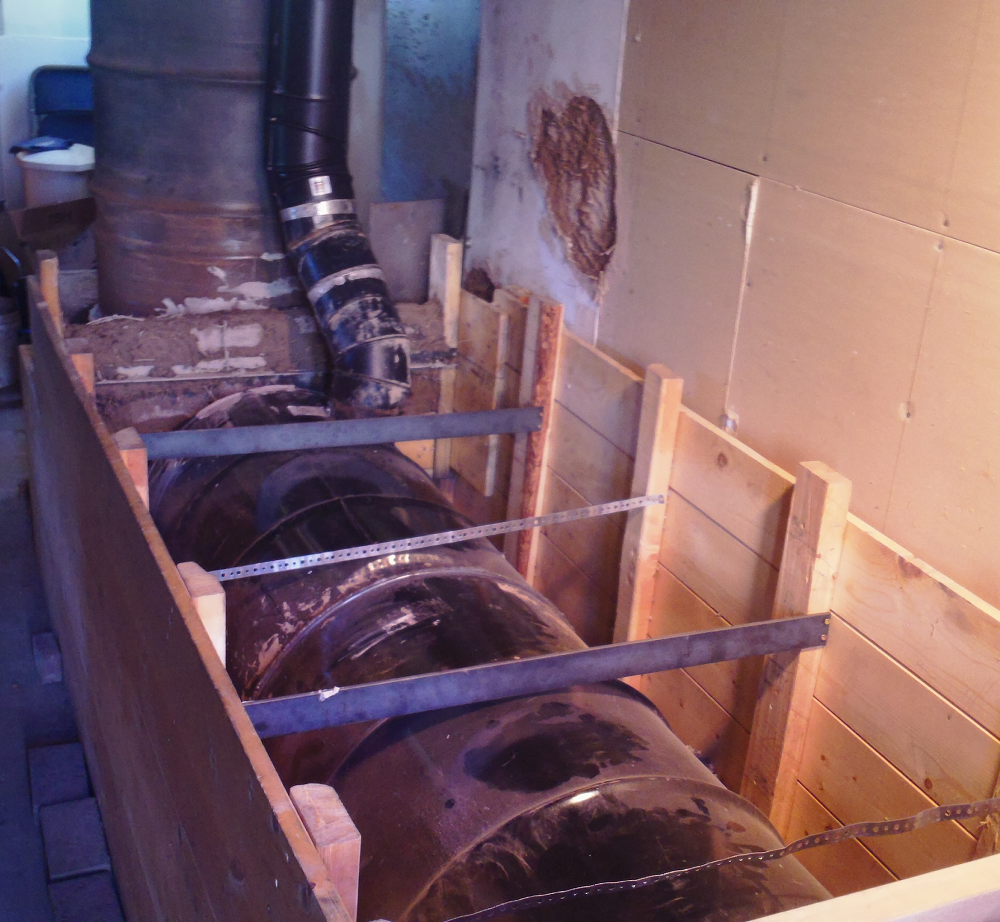




 1
1








Chad Johnson wrote:Has someone tried an adjustable bell (barrel) height to control the amount of rocket?

--
https://www.aku.si

 1
1




God of procrastination https://www.youtube.com/watch?v=q1EoT9sedqY
 4
4






 2
2




paul wheaton wrote:two more inches above the riser: the system was still running .... okay. We want magnificent. Time to do some "lawn chair design" (where you patiently sit and try to figure it out). When a fire is running, we are seeing the top of the barrel get quite red.
While that is great for boiling water, it suggests that there might not be enough gap between the top of the riser and the barrel.
We decided to pop off the barrel and measure the gap between the top of the riser and the barrel. If it is 2 inches or less, let's change that to 3 or 4 inches. ... 2 inches. So we added more than two inches below the barrel. Test: the system is now performing MUCH better. But we want it to be even better still.
paul wheaton wrote:two more inches below the juice box straw: Where the vertical exhaust comes to the bottom of the stratification chamber (juice box style), we started with a 3 inch gap. Let's adjust that to be 4 or more inches. The first test was for a 7 inch gap. Now the whole system had an incredibly excellent draw! Magnificence achieved! After a bit of lawn chair design, we decided that the whole system perform about 10% better if we dropped it to 5 inches. Done. Magnificent performance and the coming winter will give us some ideas about overall efficency.
regards, Peter








 3
3




paul wheaton wrote:The important thing here, while you are reading this thread: do you agree with my analysis about the reduction in wood burning with this system due to:
- the additional p-trap in the stratification chamber
- the reduced vertical exhaust diameter combined with the "kiss the barrel"
When the fire is out, the system is "more plugged" so less heat from the mass goes outside and less cold air from outside sneaks in. Therefore the mass gives off more heat for longer - and the operator waits longer between burns.
regards, Peter




paul wheaton wrote:peter, you will probably like this: https://permies.com/t/193821/permaculture-projects/inch-batch-box-rocket-mass
regards, Peter
 1
1




 2
2




 1
1









|
It is difficult to free fools from the chains they revere - Voltair
Homestead Pigs Course
https://permies.com/wiki/365748/Homestead-Pigs
|








